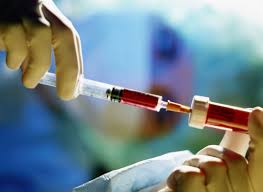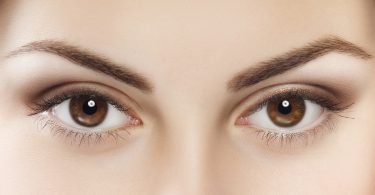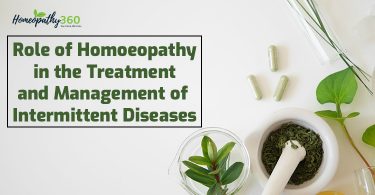Disease: A disorder of structure or function in a human, animal or plant especially one that process specific symptoms or that affects a specific location and is not simply a direct result of physical injury.
Classification of Disease according to Hahnemann
According to homeopathy disease and classification of disease
Disease is simply a deviation from normal health and well being characterized by various symptoms in every part of the psycho physical totality.
Classification:
Indisposition:
A slight alteration in the state of health manifested by one or more trivial symptoms which are slight alteration in the diet and regimen will usually suffice to dispel.
Surgical disease:
In case of injuries accruing to the body from without the treatment of such diseases is regulated to surgery ,but this is right in only so far as the affected parts require mechanical aid. Whereby the external obstacles to the cure, which can only be expected to take place by the agency of the vital force may be removed by mechanical means.
Dynamic Disease:
Derangement of the vital principal to such an abnormal state that can finish the organism with disagreeable sensations and incline makes disease in the sensations and functions of those parts of the organism expose to the senses of the observer and physician.
A) Acute Disease:
A disease or disorder that lasts a short time comes on rapidly and is accomplished by distinct symptoms.
Individual disease:
Diseases attacking individually they are instances of transient’s explosions of latent spore due to excess in food/ excess in food/ insufficient of food/ severe physical impression.
E.g.: Chill overheating, depression, mental emotion etc.
Sporadic Disease:
Accuring occasionally singly or in scattered instances sporadic diseases.
Eg: diseases that affect that attack several persons at the same time here and there. Typhoid fever.
Epidemic disease:
If it refers to the consents presence of a diseases or infections as agent with a given geographic area or population. It is the usual or expected frequency of within a population.
EG: influenza
B) Chronic diseases:
Are long term medical conditions that are generally progressive.
Fully developed symptoms (more than 3 months)
Few symptoms
1. Diseases with fully developed symptoms:
a. Non miasmatic chronic disease.
Diseases from bad hygienic conditions of living. EG: scabies and trachoma
Communicable diseases found in conditions of poverty, overcrowding and poor access to water and sanitation.
2. Disease with few symptoms:
1. One sided
2. Local disease
One Sided Disease [172- 184]
The only disease that seem to have but few symptoms and on that account to be less chances to cure are those which may be termed one sided because they display only one or two principal symptoms which obscure almost all the others.
a. Diseases with only mental symptoms E.g.: Insanity
b. Diseases with only Physical Symptoms Eg:Headache
Local Disease:
A localizes disease is an infections or neoplastic process that originates in and is continued to one organ system or general are in the body such as a sprained ankle , a boil on the hand an abscess of finger.
a. surgical
b. Non –surgical – Dynamic disease appearing on the external parts of the body.
According to Hahnmann there cannot be strictly speaking any local disease of the living organism. The organism is a living indivisible whole acts and reacts as a while.
– Oral administration of drugs of homeopathic drugs to the diseased condition the patient with general and external local changes of the body t complete cure of the patient.
Occupational Disease:
Some disease due to occupation. Eg: Asthma (nature and Treatment)
Miasmatic Chronic Disease:[Hahnemann introduced miasma in 1829]
Miasma – Greek word for faint or fault.
Certain infectious diseases are transmitted to humans by air and water tainted by miasmas’.
Hahnemann homeopathy the word misam means the effects of micro organisms on the viral force including the symptoms that are transmitted to the following generations.
Hahnemanns miasmatic theory now contained 2 veneral and non venereal miasmas that produce lifelong chronic disease.
Non venereal:
Psora
Pseudo Psora(tubercle)
Veneral:
Sycosis
Syphilis
a. Single Disease
1. Psora
2. Syphillis
3. sycosis
b. Compound Disease
1. Psora and sycosis
2. psora syphills
3. Syco- syphillis
4.Psora syco-syphillis
Identify the nature of disease by case taking (aph 83-104)
In homeopathic case taking the homeopathic physician has two objects in view ,first there is the object of diagnosis.
The homeopathic physician never uses his diagnosis for therapeutic purpose.In this he he deffer from the ordinary school of medicine , which uses the diagnosis as a guide to the desired therapy certain group conditions determined by the diagnosis determining the therapy to be applied.
The attitude of the physician should be one of absolute rest and poise with no preconceived ideas ,nor prejudices.
Plan the treatment according to the type of disease.
Modus operandi : Curative power of a drug consists in its power of altering the state of health of an individual.
Indisposition aph 150 :
In case of disease proper the vital force cannot adjudt itself automatically, even with adequate hygienic and dieteric measures , but requires a specific stimulations in the form of drugs for its readjustment and restoration of balance.
Acute disease : In acute disease the symptoms take a quick evolutionary course and it is easly, the physician to ascertain the complete picture of disease.
According to Hahnmann the totality of symptoms in case means a group of related symptoms not expressing the disease much as expressing the individual who suffers
Striking, singular, uncommon and peculiar feature. Acute disease bear repetition of the remedy. The frequency of repetition depending on the intensity of disease.
Chronic disease The general rule in chronic disease is not repeat a remedy till improvement continues.
First the medicine selected must be perfectly homeopathic to the disease.
Secondly the medicine must be given in high potency.
Thirdly medicine is to be repeated at intervals with the precaution that degree of every dose should deviate some what from the preceding and following.
Intermittent and alternating disease: the most appropriate and efficacious time for administration of medicine in the causes is immediately or very soon after the termination of the paroxysm.
Repetition: very often a single dose of the best selected remedy stops the paroxysms and cure .
Some time the same medicine in the same potency has to be administrated after each attack.
When the paroxysms keep on recurring but the same group of symptoms remaining ,the medicine has to be given according to plus system.
There are times, cases where the attacks returns after several days will being.
If the apparently indicated remedy fails to cure the patient when there is no adverse climate influence, some latent psoric infection is to be suspected and anti psoric treatment should be started.
Treatment for mental disease aph 210-230
Hahnemman considers mental disease as one sided disease of the chronic type affecting the whole psycho-somatic entity
1.Mental disease resulting from bodily diseases and later transformed into one sided diseases, treatment consist of a judicial combination of antipsoric drug treatment and psycho therapy
2. Mental disease originating predominantly from psychogenic causes and if they are of recent origin psycho therapy should be taken recourse to.
3. The 3rd type of mental diseases are treated exactly in the same line to what is followed in the treatment of acute disease attacking individually ,which are generally only a transient explosion of latent psora.
Treatment of non- venereal chronic disease
This type of disease is never cured completely with the single administration of single remedy.
Duration of chronic disease is long standing.
Treatment of one-sided
only physical symptoms striking ,uncommon ,singular and peculiar symptoms and lend individuals to the selection of the cases these making the selection of the most similar anti-psoric remedy.
Local disease
According to Hahnemann there cannot be strictly speaking any local disease of the living organism is a living indivisible whole acts and reacts as a whole.
Oral administration of drugs of homeopathic drugs to the disease condition the patient with general and external local changes of the body leads to complete cure of the patient.
Reference
B.K Sarkar 5th edition organon of medicine





